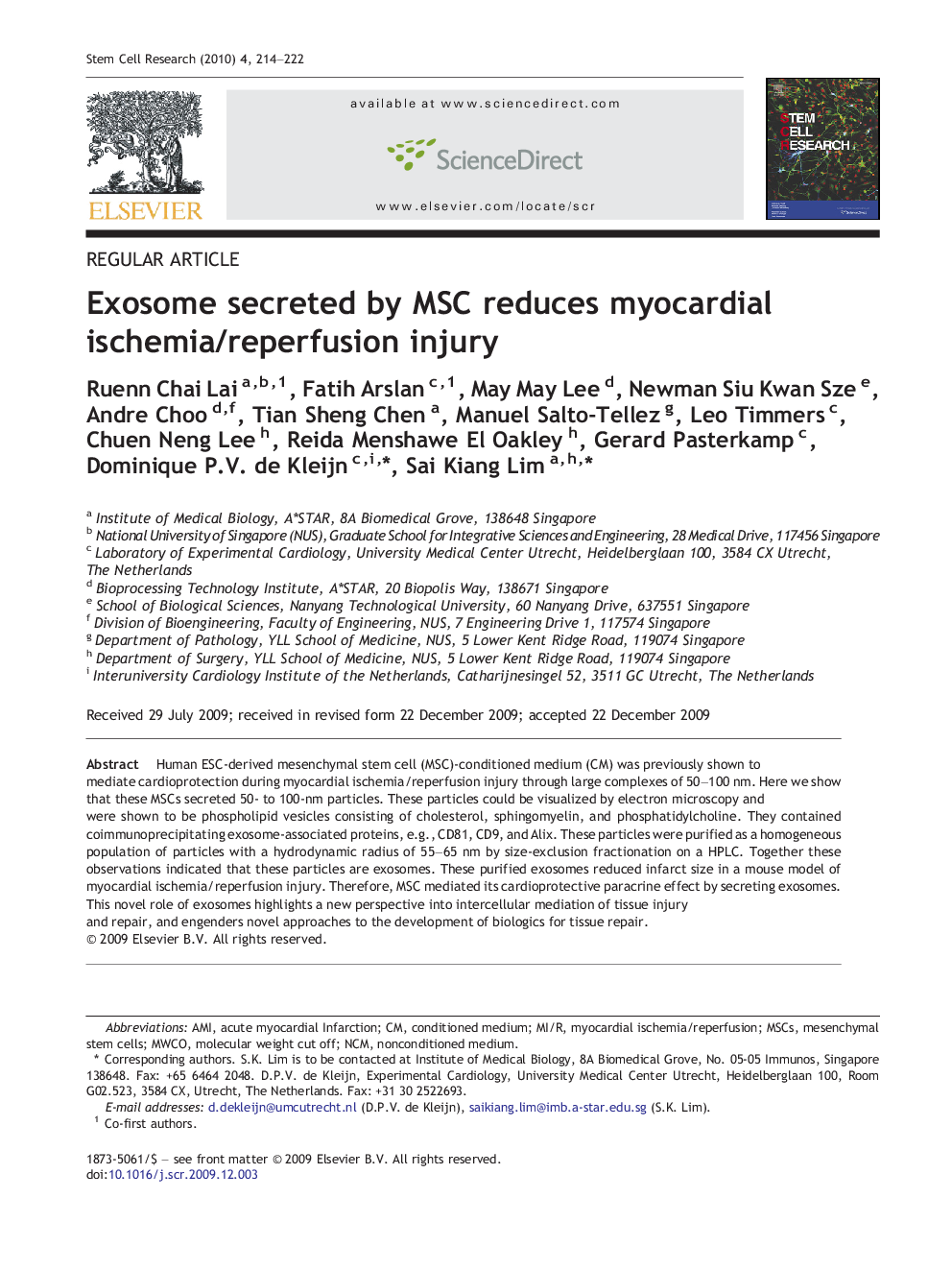| Article ID | Journal | Published Year | Pages | File Type |
|---|---|---|---|---|
| 10891380 | Stem Cell Research | 2010 | 9 Pages |
Abstract
Human ESC-derived mesenchymal stem cell (MSC)-conditioned medium (CM) was previously shown to mediate cardioprotection during myocardial ischemia/reperfusion injury through large complexes of 50-100Â nm. Here we show that these MSCs secreted 50- to 100-nm particles. These particles could be visualized by electron microscopy and were shown to be phospholipid vesicles consisting of cholesterol, sphingomyelin, and phosphatidylcholine. They contained coimmunoprecipitating exosome-associated proteins, e.g., CD81, CD9, and Alix. These particles were purified as a homogeneous population of particles with a hydrodynamic radius of 55-65Â nm by size-exclusion fractionation on a HPLC. Together these observations indicated that these particles are exosomes. These purified exosomes reduced infarct size in a mouse model of myocardial ischemia/reperfusion injury. Therefore, MSC mediated its cardioprotective paracrine effect by secreting exosomes. This novel role of exosomes highlights a new perspective into intercellular mediation of tissue injury and repair, and engenders novel approaches to the development of biologics for tissue repair.
Keywords
Related Topics
Life Sciences
Biochemistry, Genetics and Molecular Biology
Biotechnology
Authors
Ruenn Chai Lai, Fatih Arslan, May May Lee, Newman Siu Kwan Sze, Andre Choo, Tian Sheng Chen, Manuel Salto-Tellez, Leo Timmers, Chuen Neng Lee, Reida Menshawe El Oakley, Gerard Pasterkamp, Dominique P.V. de Kleijn, Sai Kiang Lim,
